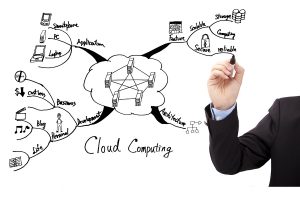 As we emerge from the isolation of the pandemic and begin interacting in person again, it will be in a world that looks and feels a lot different. While we crave human interaction, that does not mean we want to go back to standing in lines at office buildings to complete certain tasks. Over the past year, people have gotten used to doing things virtually. Government agencies have made incredible progress moving traditionally manual, paper-intensive, in-person processes online, and there's no reason that should stop now that in-person is an option.
As we emerge from the isolation of the pandemic and begin interacting in person again, it will be in a world that looks and feels a lot different. While we crave human interaction, that does not mean we want to go back to standing in lines at office buildings to complete certain tasks. Over the past year, people have gotten used to doing things virtually. Government agencies have made incredible progress moving traditionally manual, paper-intensive, in-person processes online, and there's no reason that should stop now that in-person is an option.
Additionally, the ability to get information online will continue to be an expectation of citizens. During the pandemic, local, state, and federal agencies quickly got data out to citizens regarding COVID cases, restrictions, and later vaccinations to help inform and shape behavior. In fact, Ohio had a jump on many states. They had launched Ohio Checkbook well before the pandemic to provide anyone a look at real-time state budgeting, financial and transactional data. Using that as a starting point, they quickly launched their COVID portal. Post-pandemic, all government agencies need to look at how the COVID data systems can be used to get other critical information and communication to the public about transportation, human services, workforce and more.


 In one of its first acts, the 117th Congress passed the
In one of its first acts, the 117th Congress passed the Citizen Experience
Citizen Experience For the first time ever, every government agency received a passing score on the Federal Information Technology Acquisition Reform Act (FITARA) Scorecard. Now, this does not mean that everyone made the honor roll, rather the general GPA is
For the first time ever, every government agency received a passing score on the Federal Information Technology Acquisition Reform Act (FITARA) Scorecard. Now, this does not mean that everyone made the honor roll, rather the general GPA is  DevOps, a combination of the words development and operations, is designed to smooth the frequently problematic handoff between an organization's developers and its operations staff. It is an
DevOps, a combination of the words development and operations, is designed to smooth the frequently problematic handoff between an organization's developers and its operations staff. It is an 
